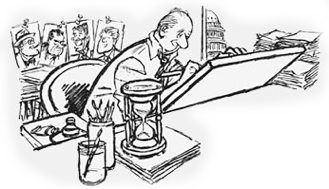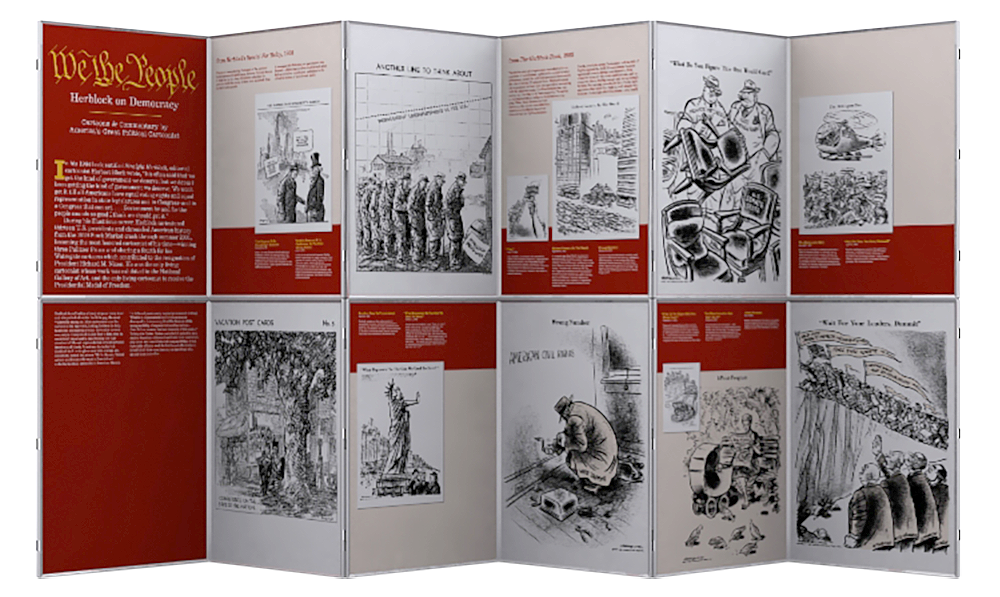Democracy
Herblock used his talents to present important questions and challenges that words alone cannot: We must vote, meet our civic responsibilities, pay taxes and expect the best of our elected government officials to work on behalf of all the people. The clarity of his message and artistic style were perfectly fused, providing transparency, a humorous and telling look at our leaders, ourselves and the world.
Request Exhibition
A Teacher's Guide
Herblock believed that America was and is the greatest nation the world has ever seen. The man that he was and the work that he produced was, in itself, an exercise in freedom of speech, freedom of the press and equality. Herblock used his talents to present important questions and challenges that words alone cannot: We must vote, meet our civic responsibilities, pay taxes and expect the best of our elected government officials to work on behalf of all the people. The clarity of his message and artistic style were perfectly fused, providing transparency, a humorous and telling look at our leaders, ourselves and the world.
1. Life Size Political Cartoon
Have the Students trace themselves with the help of a classmate in particular poses and interactions, filling the inside of the silhouettes with collage, drawings or informative text on the subject matter at hand, whether from assigned reading, current event or film. Have the students consider how they organize and compose this inside imagery and what it may mean, suggesting reference to clothing, memory, place, a diary or news story. Have the students be responsible for electing who will do what and how it will be done.
2. Threats to Democracy Project
Have the student create numerous cartoons or short stories expressing threats to democracy, based on tyranny of the majority, inefficiency, elite groups, special interest and an apathetic electorate.
3. Requirements for Democracy Project
Have student create multiple cartoons or short stories based on the Requirement for Democracy: leaders who can be replaced, choices in candidates, elections free of fraud, universal suffrage, equality for citizens before the law, courts free from outside control, civil liberties, freedom of speech and freedom of the press.
4. Democracy in Art
Have the student find images of artwork that express the ideas of Democracy and do some biographical research on the artist to find out what inspired them to create this work.
5. Group Mural
Have the students create a group mural inspired by the ideas of freedom and Democracy, using example from known muralists, past and present, political cartoons and art activism. Let the students organize themselves and chose duties, such as who will gather visual sources, who will draw or paint, compose and sharing of duties.
6. National Works of Art
Using works of art that symbolize freedom and democracy-such as the statue of Liberty or Mount Rushmore-and have students make a work of art in their chosen medium using the selected piece in a new and surprising way.
 Herb Block is among the world’s best known and most admired political cartoonists. Born on October 13, 1909, the native Chicagoan spent his 72-year career fighting against abuses of the powerful.
Herb Block is among the world’s best known and most admired political cartoonists. Born on October 13, 1909, the native Chicagoan spent his 72-year career fighting against abuses of the powerful.

























